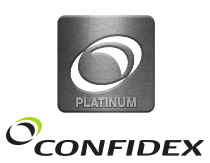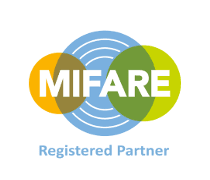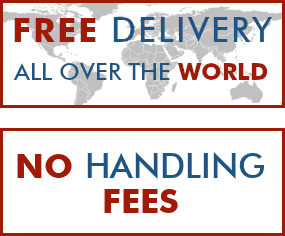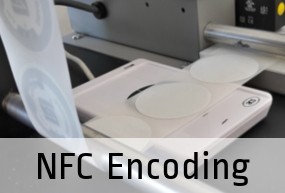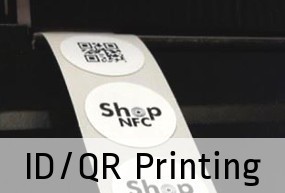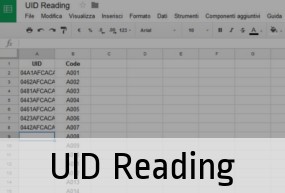How to choose an NFC reader
Do you need to read or encode NFC tags with a device other than an NFC smartphone? In this case, you may need an NFC Reader. There are many models on the market. Let's see how to choose the best for you.
To choose the reader that best bit your needs, you have to consider several factors:
- compatibility with the NFC chip;
- compatibility with your operating system;
- software compatibility;
- reading distance VS precision;
- other features or special needs.
Compatibility with the NFC chip (ISO 14443 VS ISO 15693)
First, you need to consider what type (or types) of chips you plan to use. The main difference lies in two main standards: ISO 14443 (type A or B) and ISO 15693.
To be clear, all the NTAG® and MIFARE® tags (Classic, Ultralight, Desfire, Plus) are ISO 14443-A type, while the ICODE® family complies with the ISO 15693 standard.
The majority of Shop NFC readers are compatible with ISO 14443. The most common models are the following: ACR122U, ACR1252U, ACR1255U-J1, ACR122T, SCL3711, uTrust 3700 F.
To read (and encode) ISO 15693 tags, you have to choose readers such as the Identiv Multi-ISO.
So, when you decide to buy an NFC reader, check that it is compatible with the tags you're going to use.
Compatibility with your operating system
Although many readers are compatible with Windows, Mac OS and Linux, it's always good to check first.
Above all, we recommend checking for drivers available for the exact version of the operating system in use. Without the right driver, the reader could be useless.
In each reader's page, we always insert the link to the manufacturer's website, where you can download the drivers.
Among the readers with the best compatibility in this sense, we recommend the ACR122U and the ACR1252U.
Software compatibility
This is another fundamental point, often overlooked: readers need a software.
It is necessary to verify that the software in use is compatible with the reader.
Among the free software we recommend, there are NFC Tools and TagXplorer.
NFC Tools is compatible with many of our readers, including: ACR122U, ACR1252U, ACR122T, SCL3711.
TagXplorer has a more limited compatibility. If you want to use this software (maybe to take advantage of some special features of the NTAG®), we recommend the Identiv uTrust 3700 F reader.
Note: if the purpose is only to read the Tag UID, we recommend the ACR1281U-C2 reader, which is compatible with Windows, Mac OS and Linux, does not require any software and acts as a keyboard emulator.
Reading distance VS precision
When it comes to NFC, size matters. The larger the reader sensor, the greater its reading range. This can have pros and cons.
If you plan to place the NFC Reader behind a panel or a glass, or if you need it to have the best possible performance, we recommend readers with large, high-performance antennas, such as the ACR122, the ACR1252U or the uTrust 3700 F.
On the other hand, if there are several tags close to each other and are approached by one of these readers, you may not be sure which tag will be detected first by the reader. So if you need accuracy, we recommend smaller readers, with a smaller range, but with greater accuracy, because the tag needs to be very close to the reader. Two readers of this type are the ACR122T and the SCL3711.
It must be said that, in any case, the reading distance also depends on the size of the tag antenna. This distance varies in a range of about 5-50 mm.
Other features or special needs
There are other characteristics that can make you choose one reader rather than another. Let's see some of them.
Read/write speed
Some readers support "high-speed", which means they can read/write up to 5 tags per second. These include: ACR122U, ACR1252U, ACR122T.
It is useful when you need to quickly encode a large amount of tags, even if the accuracy may be affected.
Availability of SDK libraries
This feature can be useful if you want to use the reader with a pre-existing application, already in use. Or if you are planning to develop a software or an application that also includes the use of an NFC reader. In this case, you'd better check the availability of these libraries.
The readers produced by ACS and Identiv generally have free libraries and good documentation. For other readers, such as Orbit, there is the availability of non-free SDKs.
Connection interface
NFC readers read/write tags and typically communicate with another device, such as a computer or a server. Depending on the use, it may be useful to choose a reader that has USB, Bluetooth, or Ethernet interface.
Massive encoding
Often, there is a need to encode a large amount of NFC tags. In this case, a "normal" reader is not very effective. So, we sell NFC printers, which are able to automatically encode NFC tags in "standard" formats, such as labels on reels, or PVC cards.

